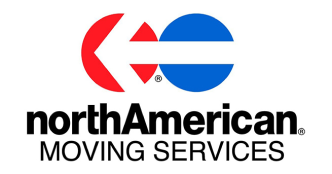Fall Home Maintenance: Why You Need Your Driveway Repaired
Selling or just moved into your new home Cord Moving and Storage, a global moving company headquartered in Saint Louis, MO and an Agent for North American Van Lines, offers some Fall Home Maintenance: Driveway Repair advice.
Driveways tend to get neglected when it comes to annual home maintenance and repair. Whether you don’t feel qualified to take on a project as big as a driveway, or if you don’t feel it’s necessary to perform an inspection every year, it’s all too easy to ignore the cracks and drive a little bit slower the next time you pull in.
But when it comes to curb appeal and child safety, driveways do matter. In fact, if you have huge cracks and you fail to improve them, you may actually be held fiscally liable if someone trips and hurts themselves. That’s why you should always include driveway repair to your annual maintenance checklist.
Signs You Need to Repair Your Driveway
Any time cracks and/or pits appear in the surface of your driveway, it’s time to consider repair. A solid driveway with no visible damage is protected against the elements, meaning water can’t seep in and cause the freeze/thaw cycles that are so harmful. As soon as those cracks appear, however, your driveway is susceptible.
The winter months ahead mean that the temperatures will soon rise and fall, so that freezing cycle is likely to start in earnest. By fixing those cracks and resealing the surface now, you can avoid these damages before they occur.
Dealing with Asphalt Driveways
The best way to repair an asphalt driveway is to use a caulking gun and a latex crack sealer to fill in the gaps. (Larger potholes may require a cold patch.) It’s possible to just leave this crack sealer in place and move on, but you can also opt to level the driveway and seal it at this time. Most homeowners are happy with patchwork as a temporary fix but should look into resealing every three to four years.
Dealing with Concrete Driveways
It’s important to match the material of the driveway to the product you use. Concrete driveways tend to show smaller hairline cracks much easier than asphalt, and you’ll need a concrete sealer or pourable grout (or even textured caulk) to fix the issue and also improve the look of the surface.
Concrete is complicated because larger cracks and gouges typically need more professional repair than asphalt. Because concrete fillers can pop out or only increase the problem (because of expanding and contracting in the cold), large sections of the driveway may need to be removed and replaced in order to fix the problem.
Sealants Matter
Above all else, always remember that in order to keep your driveway in good condition, you need to regularly apply and upgrade the sealant. Most cracks are caused because the sealant has worn away and liquid is seeping into the driveway. By making sealants a regular part of your home maintenance, you can avoid the more costly and time-intensive repairs.
Stay tuned for more fall home maintenance tips and if you are looking for St. Louis movers, Belleville movers, Memphis movers, or Dixon movers, be sure to contact Cord Moving today. Cord Moving and Storage is proud to be one of the best St Louis moving companies and have offices in Memphis, Belleville, IL and Dixon, MO.

